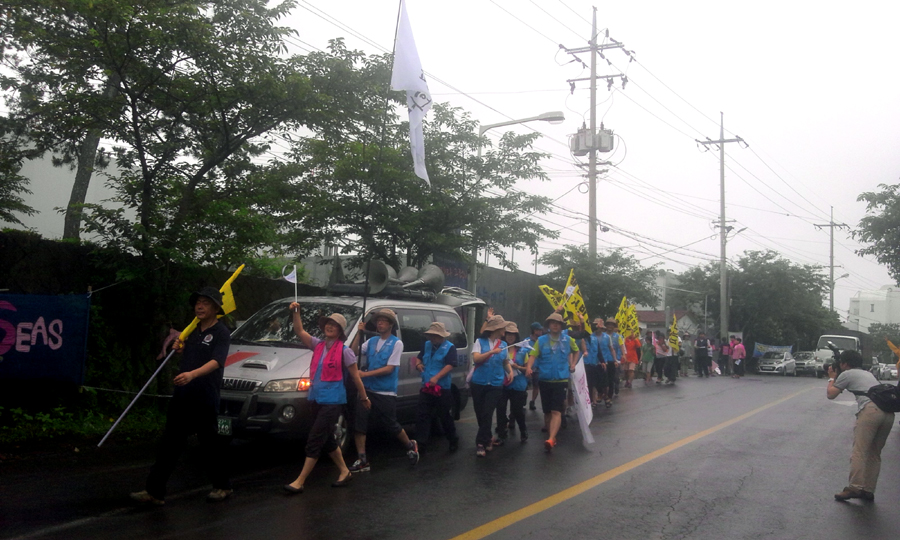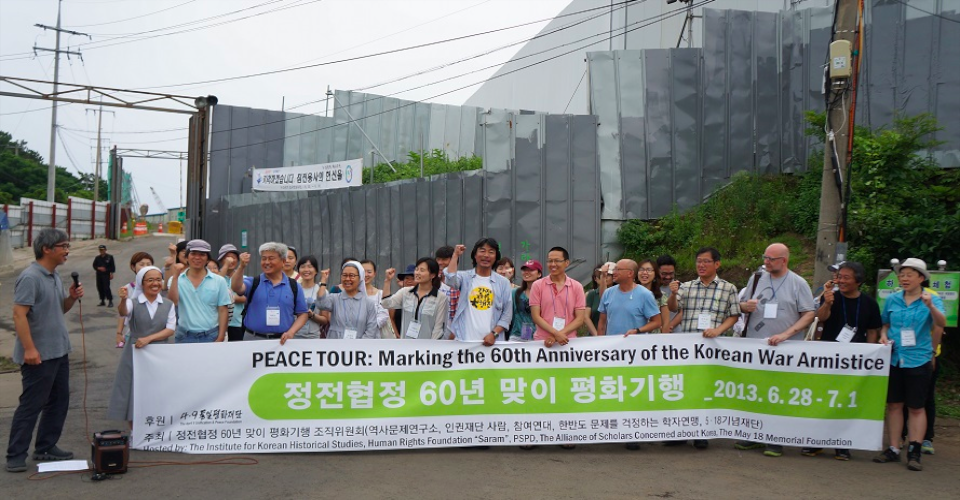Upon the year marking the 60th anniversary of the Korean War Armistice, people’ steps for peace amid the escalating war threat in Korea are marking their ways such as through petition, peace tour and peace pilgrim.
One of those steps have been the Peace Tour, organized by about 60 people of domestic and international scholars on the Korean War and civic activists, from June 28 to July 1. Another step of peace pilgrim started on July 4, which ends on July 27, the 60th anniversary date of Korean War Armistice. The latter was organized by an international grand peace march group composed of organizations such as the Citizens’ Act to Oppose War and to Realize Peace and the Jeju headquarter of the South Committee for the Practice of 6.15 Joint statement.
The former ended its peace tour in Gangjeong on July 1 while the latter started its peace pilgrim in Gangjeong on July 4. Gangjeong is now one of people’s ‘pivots’ to face against Obama’s ‘Asian pivot:’ A peace pivot, a peace outpost to realize the peace in Korean peninsula and Northeast Asia.
The 2013 Gangjeong Grand March for Life and Peace, from July 29 to Aug. 4 with its eve festival on June 28 will succeed people’s such peace aspiration.
1. Peace Tour: Marking the 60th Anniversary of the Korean War Armistice (June 28 to July 1)
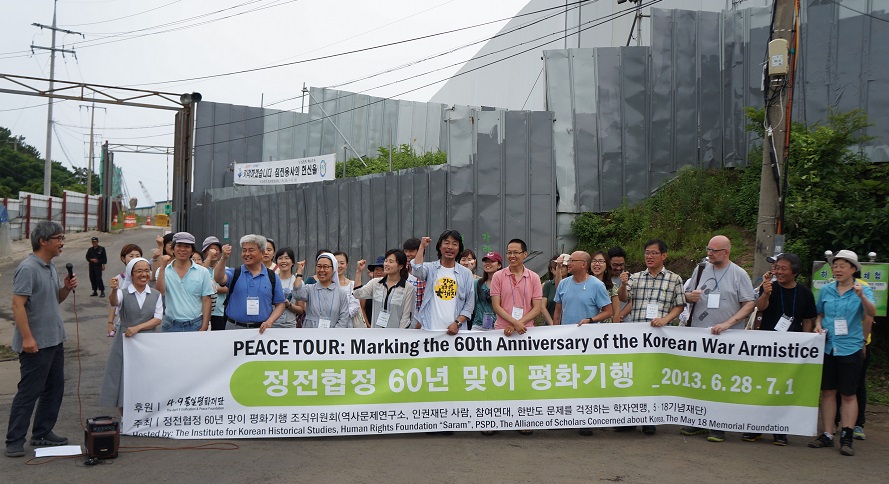
The former, the Peace Tour hosted by the Organizing Committee for Peace Tour marking the 60th Anniversary of the Korean War Armistice were composed of the Institute for Korean Historical Studies, Human Rights Foundation “Saram,” People’s Solidarity for Participatory Democracy(PSPD), The Alliance of Scholars Concerned about Korea(ASCK), and The May 18 Memorial Foundation.
The Peace Tour that started with keynote speeches by Fr. Mun Jeong-Hyeon and J. T. Takaki, in the former KCIA site in Namsan, Seoul, went through Korean division sites such as Jeokgoonmyo (enemy’s Cemetery), Story Firing Range, Gwanghwa Peace Observatory; US base sites such as Pyeongtaek, Daechuri; and war and dictatorship massacre sites such as Nogeun-ri, Geochang, Gwangju.
Seminars were held three times during the tour: 1. Division, Life: 2. US Military and the Korean peninsula; 3. War and Massacre.
In the tour’s last spot in Gangjeong, a Peace Declaration concluding tour was read in front of the naval base project committee building complex. Please see here for the whole statement and following resolutions (Please mouse down until you see the English part)
Here are some excerpts:
[..]On the 60th anniversary of the armistice, the “peaceful solution” called for in Article 60, Section 4 of the Armistice Agreement has yet to be realized. Instead, without a peaceful resolution, the physical and psychological pains from the war persist to this day.
[..]Gochang and Jeju Island, we visited the sites of extreme state violence not just in wartime, but also in the years leading up to and after the Korean War; and in Gwangju, we saw that similar violence was repeated under the Armistice system. Witnessing the construction of a new naval base in Gangjeong, we were reminded of how the state of war between North Korea and the U.S., and between the two Koreas, provides justification for future conflicts, with islands in the Asia Pacific, including Jeju, serving not as bridges of cooperation, but as frontline bases.
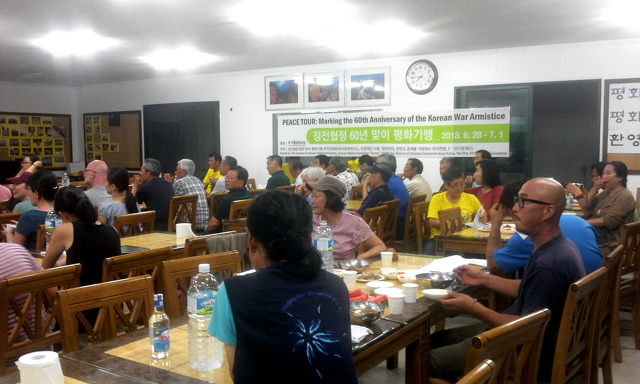
2. An international peace march to realize the ‘Peace Agreement’ (July 4 to 27)
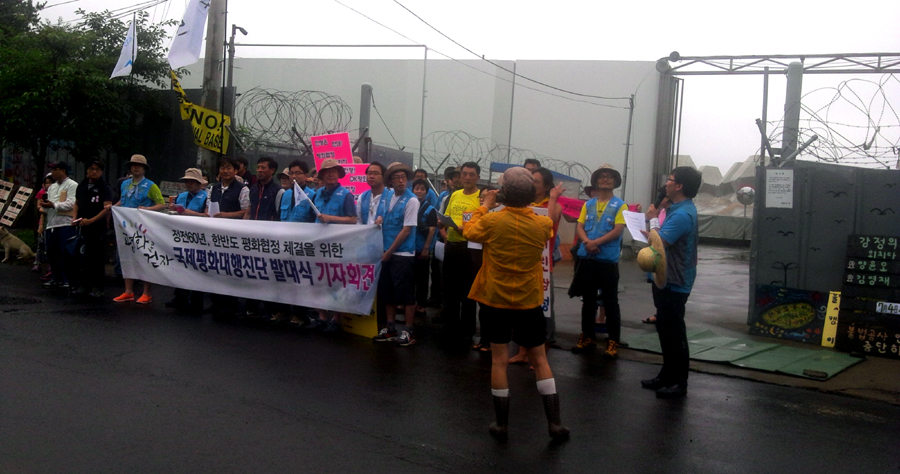
About 20 people of the international peace march group started 25 days’ great march after their launch ceremony for the ‘international great peace march to realize the peace agreement, upon the 6oth anniversary of Korean War Armistice,’ in front of Jeju naval base construction main gate in the morning of July 4.
They demanded ‘prompt conclusion on the peace agreement,’ and ‘resumption of posed talks and negotiations with North Korea.’
They saying that, “under unstable cease fire regime, you cannot stop the horror of war and cannot realize peace,’ claimed that ‘peace agreement should be definitely concluded to completely finish the war in this island.”
They also added that talks and negotiations such as six party talks, NK-US talks and ROK-NK talks should be promptly resumed for the peace of Korean peninsula.
The march spots include sites of pain from war and massacres , including cobalt mine in Kyungsan, Nogeun-ri, Choongbook, and Jiri Mt. (source)
